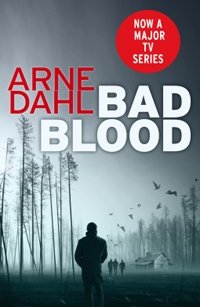
Originally written in 1998, it follows on from events in The Blinded Man as A-Unit (aka The National Criminal Police’s Special Unit for Violent Crimes of an International Character) are recovering from the hunt for a serial killer who was taking out Sweden’s captains of commerce. Their operational director, DS Jan-Olov Hultin calls the group together to inform them that FBI agents believe a notorious American serial killer – the so-called Kentucky Killer – is on a flight from New York to Stockholm. A Swedish literary critic has been found dead at JFK airport and it seems the culprit has used his ticket and boarding pass to catch the flight. If you watched the show on BBC4 all of this will sound familiar.
The MO is just the same as that of the Kentucky Killer. The New York victim endured an excruciating torture session in silence – the murderer used special tools to incapacitate his victim and sever his larynx. FBI investigators believe such equipment was used by an elite army unit to torture the enemy during the Vietnam War. The leader of the squad was a prime suspect, but he is thought to be dead, so A-Unit have a big problem. How do they catch a ghost?
Their attempt at using local police to arrest the killer at the airport as he goes through customs in Sweden is bungled and lead detective Paul Hjelm and his team soon discover more victims in Sweden. With the investigation stymied, they have to travel to Kentucky to work with FBI Agent Ray Larner to uncover the secrets of the dead soldier in order to catch the killer before he strikes again.
The book is not altogether successful. That’s partly because it has dated somewhat and references to novel devices like mobile phones and this thing called the internet might grate. Mostly, however, it’s the writing, which is frequently ponderous, repetitive and almost entirely humourless. Less is made of the different relationships within A-Unit than I would have liked. For example, the brief affair between the married Hjelm and his co-worker Holm that occurred during the pressure of their last investigation is barely explored. Perhaps something is lost in the translation, but Harvill Secker has been publishing foreign crime long enough not to make that mistake. On the back cover the publishers describe Bad Blood as a mixture of Henning Mankell, Martin Beck, and CSI. Of the three, the CSI reference might be the most apt because of the emphasis on the investigation process.
If you enjoy the blockbuster style of writing seen with the likes of James Patterson, Bad Blood may well appeal. However the elements of drama and danger are often boosted at the expense of nuance and subtlety. This is certainly crime fiction on a grand scale and it’s no surprise that the author’s stories have worked very well on television. Written down, Bad Blood’s saving grace is the second half of its storyline. The plot contains a wonderful twist that we shan’t reveal for fear of spoiling it for anyone who didn’t catch the TV show. Suffice to say, it does lead to some interesting emotional insights which feel genuine, adding a layer of complexity which is absent earlier in the story.
Harvill Secker
Print/Kindle/iBook
£8.54
CFL Rating: 3 Stars